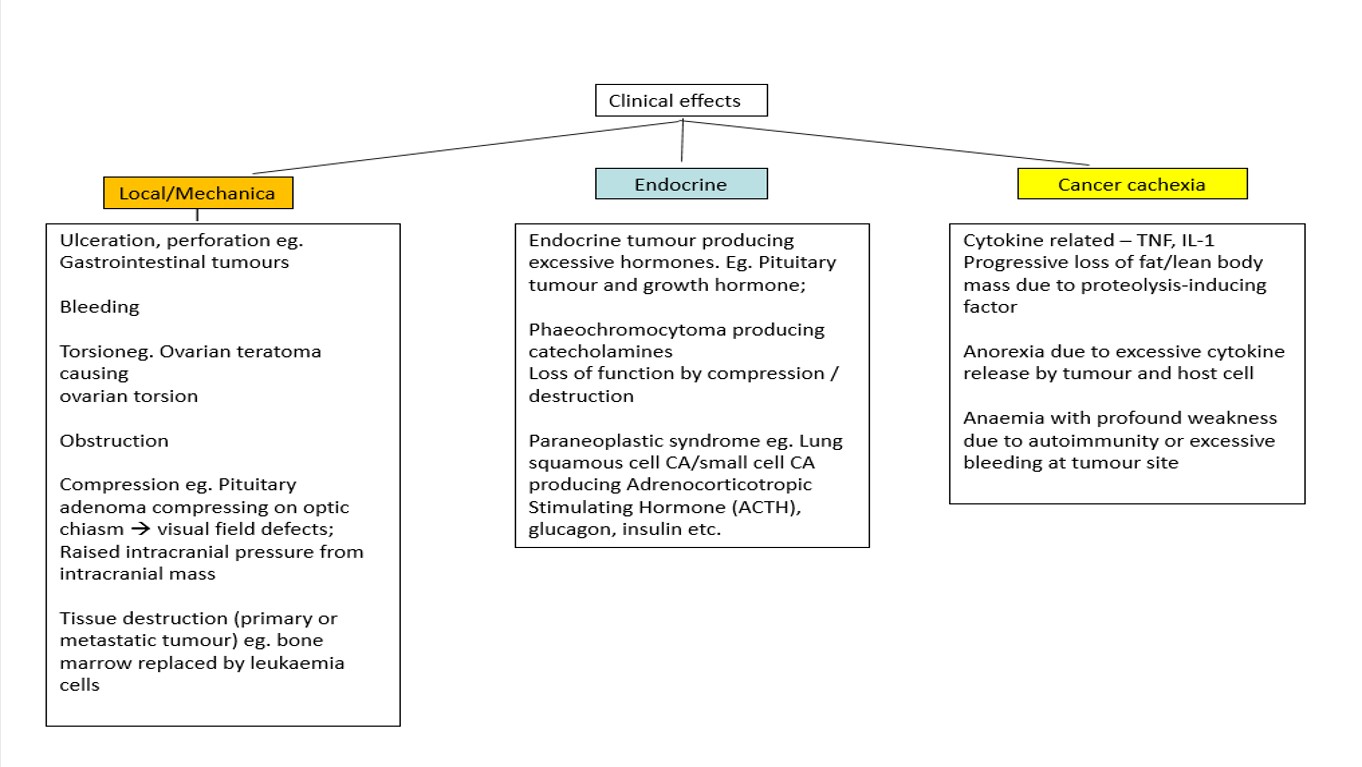1. Clinical effects
Tumours can cause significant clinical effects, and even lead to death, if not diagnosed and treated early. Even benign tumours can cause life threatening clinical effects, eg. Intracranial tumours giving rise to increased intracranial pressure; endocrine tumours causing severe hypoglycaemia; bleeding from vascular tumours.
Clinical effects of tumours (adapted from Robbins and Cotrans Pathologic Basis of Disease).

This video summarises clinical effects:
MINDMAP: CLINICAL EFFECTS OF TUMOURS ON HOST
If you can't play the video, watch it here on YouTube: https://youtu.be/2PP_Z9hcLus
2. Prognosis (Malignant Tumours)
The prognosis is a forecast of the outcome of the disease (eg. good prognosis; poor prognosis). The TWO most important prognostic factors are Stage and Grade.
These parameters give an idea of the clinical aggressiveness of the tumour.
What is tumour stage?
Tumour stage essentially refers to the size and/or extent of the tumour growth.
Clinical findings, radiological imaging (CT scans, MRI, PET scans etc), intra-operative surgical findings and pathology reports of excised tumours are used to stage tumours.
The AJCC TNM Staging system (American Joint Committee on Cancer) is widely used. Different tumours have different TNM staging systems according to site and/or tissue of origin.

What is tumour grade?
Tumour grade reflects the degree of differentiation of the tumour – how well the tumour cells resemble the tissue of origin. The closer the resemblance, the lower the grade. In high grade tumours – the cells appear very abnormal and are hard to recognise as a certain cell type.
Tumour grade is thus always assessed MICROSCOPICALLY by the pathologist – based on architecture and nuclear features.
The MINDMAP below explains Staging and Grading in more detail.
MINDMAP: STAGING AND GRADING
If you can't play the video, watch it here on YouTube: https://youtu.be/6q4uM8bHFUc
